Watt Dhammacakkaram Marks a Milestone Vote
Written by: Bob Baumgartner
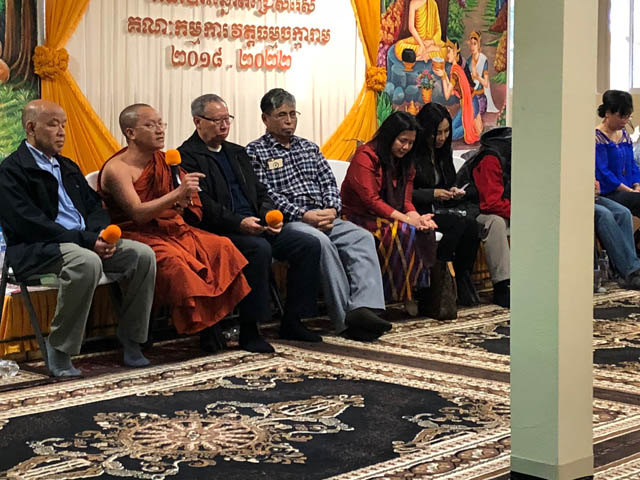
Venerable Soveth Moun, a monk for 25 years, addressing the audience before the vote.
Photos by: Bob Baumgartner
Reversing some early years of organizational difficulty, members of Washington state’s oldest Cambodian Buddhist temple in November successfully elected their third board of directors in November.
Members of Watt Dhammacakkaram gathered in celebration Nov. 25, appreciative of their improved Seattle facilities and newfound political acumen.
“I’m so proud of our community,” said Pakum Sin, a former board member. “Within a few years of us being in the United States, we were able to purchase the property that we built the temple on. And 40 years later we still have great support, and the temple is progressing as we want.”
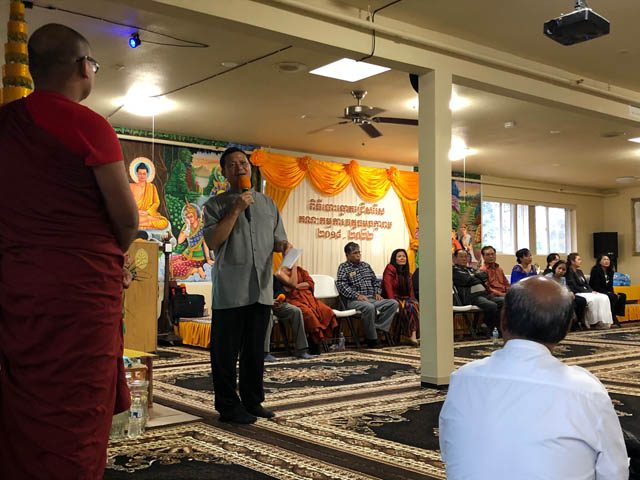
The nine-member board will assume its new role January 1. Board members will then elect a new board president.
A likely candidate for president will be the abbot, Venerable Soveth Moun, a monk for 25 years. As candidate for the board Venerable Moun was extremely popular, getting 75 out of 110 votes.
In a November interview, Moun said he planned to officially disrobe in a ceremony Dec. 15 and 16. He would visit his parents in Cambodia for a month, and then would return to Seattle and seek a job. He will continue his work at the temple as a layperson, he said.
Moun said he plans to disrobe because he has accomplished what he set out to do as a monk, including sponsoring five monks to come from Cambodia.
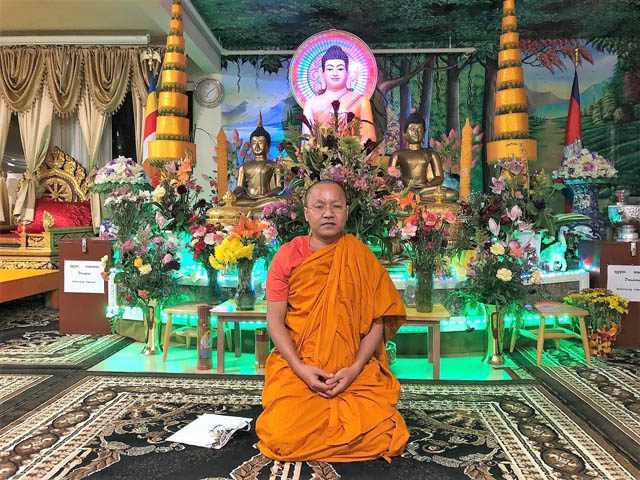
“I became a monk 25 years ago,” Moun said. “I had a plan to be a monk long-term. My proposal, I’ve finished.”
People at the temple credit Moun for leading the monastic community skillfully. At the temple monks are responsible for officiating at ceremonies, and teaching about Buddhism and classes in Khmer script. The board, which is made up of elected laypeople plus the monks, is responsible for business decisions including building renovations, compliance with local governments, and temple hall scheduling.
Outgoing Board President Larry Seng expressed joy in showing off improvements in the temple building. These include new restrooms, a commercial kitchen, a large meeting hall, a large storage space in the basement, even a cabinet for urns containing the ashes of deceased temple members.
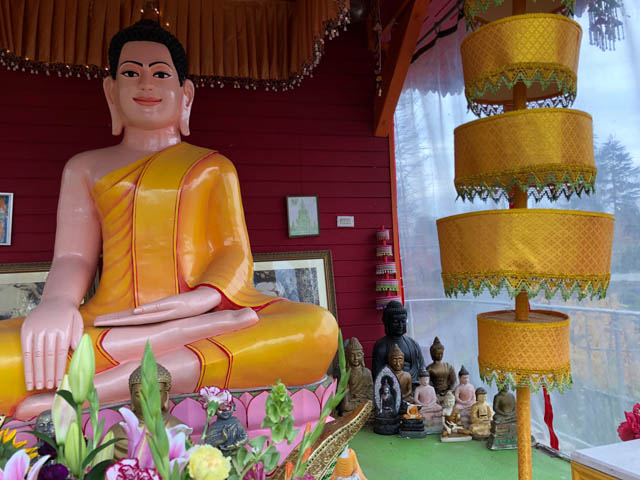
Even with a new addition, the temple hall has been filled to capacity, Seng said. For the recent Kathina ceremony, a day of offering to the monks which is one of three big events every year, people had to stand in the aisles. More than 400 attended and the donations were substantial, he said.
“I’m very proud of our community,” said Sin, the former board member. “I’m happy to be a part of it. I’m very proud to see the community succeed.”
The recent progress comes after a period during which the temple wasn’t in such good shape.
When the temple was founded in February, 1982, it was the first Cambodian temple in Washington State. As refugees members didn’t have a lot of money, but they worked together to build a place for their community, Sin said.
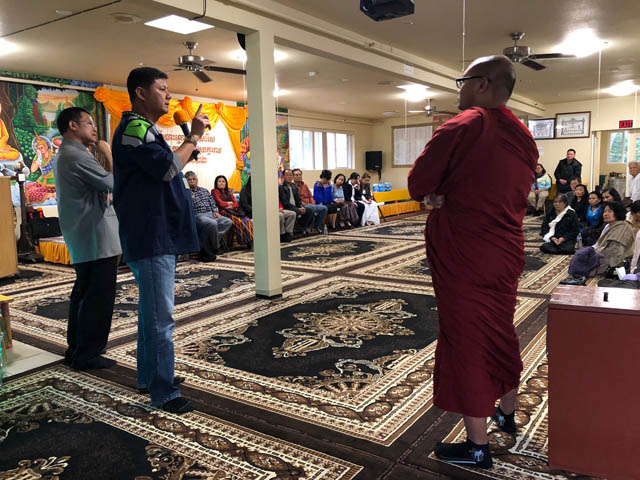
Then the temple hit a rough patch and people were divided over leadership. Official paperwork fell into disarray. A lawsuit ensued. Some members left to build a new temple. A fire destroyed part of the building. The temple closed down for a few years, Sin said.
The year 2011 was sort of a “reset” for the temple, Sin said.
“At that time we could have sold and moved on,” he said. “But people told us, ‘No matter what, keep the temple here.’”
Members reorganized around the goal of preserving the temple. They straightened out temple paperwork. They clarified roles, and developed bylaws designed to avoid the problems of the past.
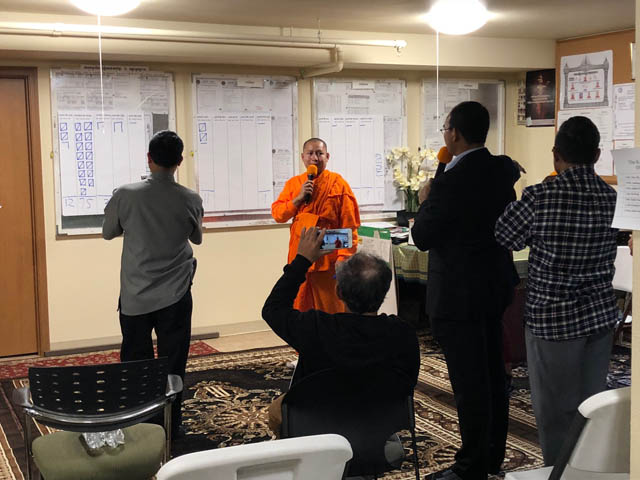
Now Watt Dhammacakkaram is overseen by the Khmer Buddhist Society, a nonprofit 501 (c)(3) organization, Sin said. Under the bylaws, every four years nine board members are elected by a vote of at least 100 people. The board then elects a president.
Sin credits outgoing-President Seng for doing a great job. Elected in May, 2011, the smiley, charismatic Seng has already served two four-year terms. According to the temple bylaws, Seng is term limited and cannot immediately serve again as president, but can continue to serve as advisor.
At the start of his tenure, Seng was unsure of his own ability, he said.
He remembers thinking, “Honestly, I’m not ready to be a leader yet, but somehow people trusted me to be a community leader. When people selected me, I felt happy to give all my ability to make people feel happy.”
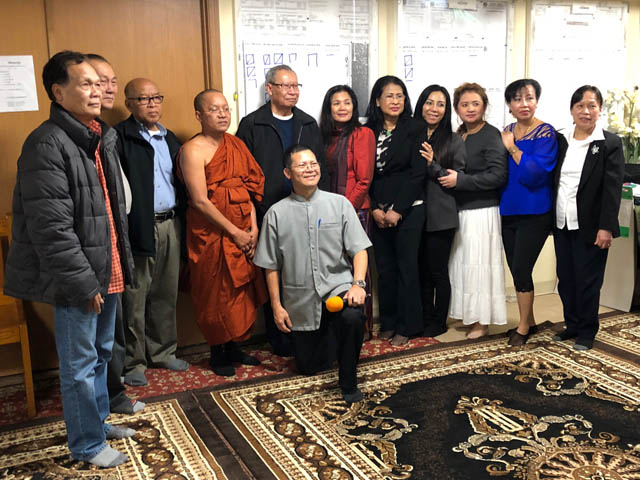
The community came together on Thanksgiving weekend to make the progress visible: a building up to code, and members interested, even personally involved, in temple governance. The group showed a remarkable combination of traits: the flexibility to happily build consensus, along with careful adherence to their bylaws.
“We lead as a group,” Seng said. “As a leader, we put ideas out. We sit down with board members and explain the ideas. More people get involved. Eventually, the idea grows roots of its own. That idea is not an individual idea any more, it’s a group idea.”
Sin expressed amazement at the community’s ability to raise money. Normally, he said, there’s little money in the bank account.
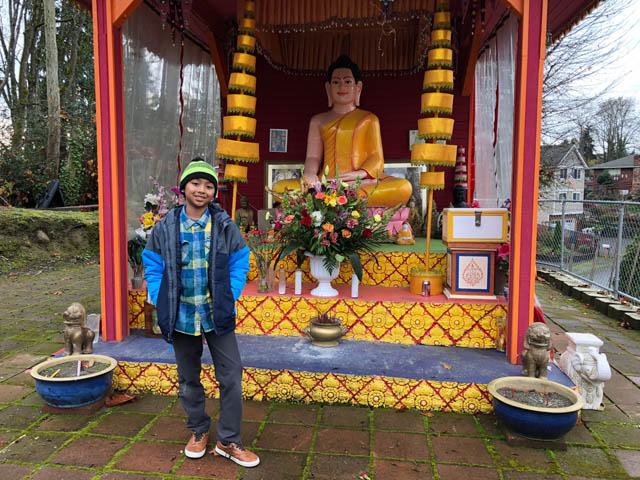
“When we have a project we publicize to the community. We say what we want to do,” he said. “People pledge to support X number of dollars for one thing, some amount for another. Somehow the money always flows in. That just blows my mind.”
Now the group is planning more progress. As part of the recent construction, a huge retaining wall was built on the steep Beacon Hill property, and Moun wants to add to that with a road, a parking lot and a playground for kids. But, he said, as always, “It depends on the laypeople’s support.”
Seng has some ideas too. He wants to continue the progress, to foster unity between the monks, the board and the laypeople, and to teach the next generation. He wants to “produce education, so children know and understand their own culture.”
“It’s hard work, but we found a way to be successful,” Sin said. “Of course, we have problems, but if there’s a problem, we like to solve it in our community.”
In his work life, Bob Baumgartner is the customer service manager for an exercise equipment company. He lives in Mountlake Terrace with his two children, and enjoys the community of people at the Seattle Meditation Center.
